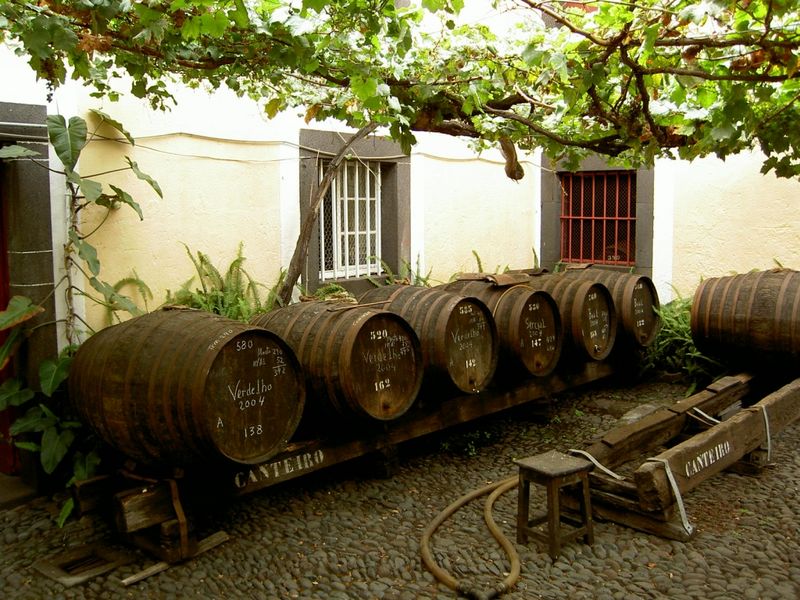I know! Sounds weird right?! On the contrary – I had a peanut butter chocolate chip cookie with Madeira, and they played well together!
There’s a good chance you’re not familiar with Madeira. I know I wasn’t. I’ve seen it called for in a few recipes, and occasionally I’ve seen it listed among the dessert wines when dining in a restaurant, but I’d never tried it.
Madeira falls into the category of fortified dessert wines (the other two broad categories of dessert wine being late harvest dessert wines, and ice wines. I’ll share my late harvest and ice wine experiences another time). A fortified wine is wine to which a distilled beverage (usually brandy) is added. Aside from Madeira, other fortified wines include Port, sherry, Marsala, and vermouth. The addition of brandy brings the alcohol level up to 17-20% (most wine is between 10-15% by comparison). Like most wines, it’s made in a variety of styles ranging from dry, which can be consumed on it’s own as an aperitif, to sweet wines consumed with dessert.
To make Madeira, depending on the level of sweetness desired, fermentation of the wine is halted at some point by the addition of brandy leaving a fortified wine.

While most wine is aged under carefully maintained cool temperatures indoor is cellars, what makes Madeira unique toffee-caramel like character is that the wine is heated. The most basic (and least expensive) Madeira is made by placing the fortified wine in containers (casks, vat, or even cement tank) that are then heated to an average of 105 degrees for 3-6 months. However, better Madeiras are heated naturally. Casks of the best wine are stored in attics of the producer’s warehouses, which sit in the hot Madeiran sun (Madeira is a small volcanic island that is part of Africa, but is a province of Portugal), which creates tremendous heat. The casks remain undisturbed in the sun for as long as 20 years. After the heating process is complete, the wine is cooled, and allowed to rest a year or more to recover from the shock. Thereafter, the wine further aged. The additional aging can be very involved process involving aging the wine in casks made of various types of wood, and can take place over a 3-20 year period. Do the math and some of the great Madeiras can take 40 years, or longer to make!
Properly sealed in bottles, Madeira is one of the longest lasting wines; Madeiras have been known to survive over 150 years in excellent condition. No wonder, after years of sitting in the hot sun, being stored at room temp is a piece of cake.
I had a 5-year Malmsey Madeira, which means the youngest component in the blend is aged at least 5 years in casks. Other types of Madeira are 3, 10, 15 year Madeira, and Vintage Madeira (unlike virtually all other Madeiras which are blend of grapes from different years – vintage Madeira is made from grapes from a single year. And like other wines Madeira is made from a variety of grapes. Malmsey Madeira is made from Malvasia grapes, and is the sweetest style Madeira.
All Madeira has great natural acidity which make then refreshing to drink on their own. But as I discovered, they can also make a wonderful juxtaposition to the richness of desserts made with cream or chocolate. And that’s what gave me the idea to try Madeira with a peanut butter chocolate chip cookie. I felt the toffee/caramel character would complement the peanut butter, while at the same time providing a wonderful counterbalance to the chocolate. And this time I was right! It was also good with a Hershey Kiss with Almonds!
Madeira would work well with nutty cheeses such as Gruyere, and blue cheeses. For those with a sweet tooth, try it with dark chocolate desserts, and pecan, or pumpkin pie. Just keep in mind, that as a general rule, the wine should be somewhat sweeter than the dessert.
Related Articles
- WBW #51 Baked Goods and Madeirized Wine | Catavino (catavino.net)